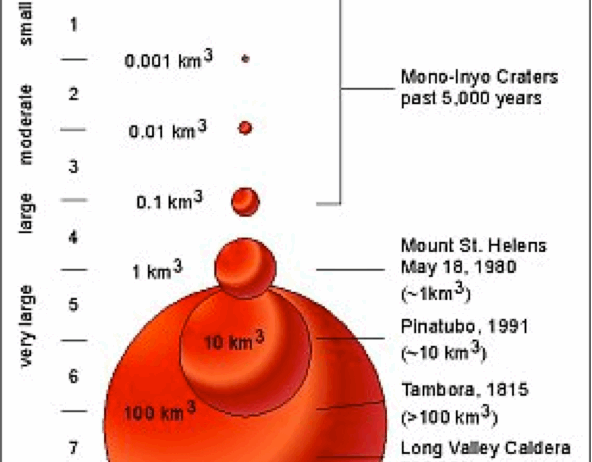Volcanoes, awe-inspiring forces of nature, possess the ability to profoundly alter our climate. When they erupt, not only do they unleash molten rock and ash, but they also release various gases and aerosols that can influence atmospheric conditions. This essay delves into the multifaceted effects volcanoes have on the climate, providing an in-depth exploration of their immediate and long-lasting implications.
To appreciate the climate effects of volcanic eruptions, one must first comprehend the different components released during an eruption. Primarily, volcanic eruptions emit sulfur dioxide (SO2), carbon dioxide (CO2), water vapor, and a cocktail of other trace gases and particulate matter. The complexity of these emissions is a key factor in understanding their diverse climatic impacts.
Firstly, sulfur dioxide is particularly influential. Upon its release into the atmosphere, SO2 transforms into sulfate aerosols, which have far-reaching consequences. These aerosols reflect solar radiation back into space, resulting in a cooling effect on the Earth’s surface. The most notable example of this phenomenon occurred after the eruption of Mount Pinatubo in 1991. The massive release of sulfur dioxide contributed to a global temperature drop of approximately 0.5 degrees Celsius for a couple of years following the eruption.
In contrast, carbon dioxide remains in the atmosphere for much longer. Although volcanoes are not the predominant source of atmospheric CO2—with human activities being the primary contributor—volcanic eruptions do add to the overall atmospheric burden. The contribution of CO2 from eruptions is negligible compared to what comes from industrial sources, yet it augments the greenhouse gas concentration, exacerbating climate change in the long term.
Water vapor, the most abundant greenhouse gas, is also released during eruptions. While its role in intensifying climate change is complex and often overshadowed by CO2, it’s significant nonetheless. Variations in water vapor can lead to alterations in cloud formation and precipitation patterns, impacting local and regional climates.
The particulate matter released during eruptions also interacts with the atmosphere. Ash clouds can travel vast distances, affecting air quality and climate. However, it is the larger volumes of volcanic ash that can smother sunlight, contributing to short-term cooling effects. For instance, historical eruptions such as the Krakatoa event in 1883 caused dramatic atmospheric effects that included vivid sunsets and unusually colder temperatures for several years.
It is essential to recognize that the climatic impact of volcanic eruptions is not uniform. Factors such as the eruption’s magnitude, the type of volcano, and the geographic location significantly influence how and to what extent climate is affected. Stratovolcanoes, often associated with explosive eruptions, tend to release more sulfur dioxide and ash, leading to more pronounced cooling effects. In contrast, shield volcanoes, with their relatively gentle eruptions, may contribute less to atmospheric changes.
Furthermore, the timing of an eruption can determine its climatic implications. Eruptions occurring during different seasons might have disparate consequences. For instance, if an eruption happens in the spring or summer, it may contribute to cooling during the warmer months, whereas an eruption in the fall or winter might exacerbate cold conditions. Such seasonal variances necessitate a closer examination to understand better the overall impact of volcanic activity on climate.
Beyond temporary cooling periods, some volcanic eruptions can initiate more prolonged climatic shifts. The long-term climatic effects become pronounced particularly when multiple eruptions occur in succession or when large-scale eruptions happen. The cumulative effect can lead to lasting alterations in average temperatures, precipitation patterns, and even ecological impacts.
Ecological responses to volcanic eruptions also deserve attention. Changes in climate due to volcanic activity can lead to shifts in ecosystems, influencing flora and fauna. Some regions may experience enhanced growth due to increased nutrients from volcanic ash, while others could suffer from altered habitat conditions, leading to declines in biodiversity.
Moreover, the socio-economic implications of volcanic-induced climatic changes are substantial. Farming, fishing, and other livelihood-dependent activities may face variability, resulting in food security issues. Communities, especially those residing in proximity to active volcanoes, may find themselves grappling with not just immediate disaster management, but also longer-term climatic challenges and sustainability considerations.
The interconnectedness of volcanic activity and climate change underscores the need for robust monitoring and research. Understanding the relationship between these natural phenomena and our changing climate is paramount for building resilience against future climatic events. Proactive measures should be implemented, encompassing early warning systems and preparation strategies for communities at risk.
In conclusion, volcanoes are not just geological wonders; they are powerful agents of climate change. From short-term cooling effects resulting from sulfate aerosols to long-term CO2 contributions, the impact of volcanic eruptions on climate is multifaceted and complex. As we continue to grapple with global climate change, understanding and monitoring the effects of volcanic activity remains a critical aspect of climate science and policy. In this intricate dance between nature and human influence, recognizing the voice of volcanoes can illuminate the challenges ahead.








